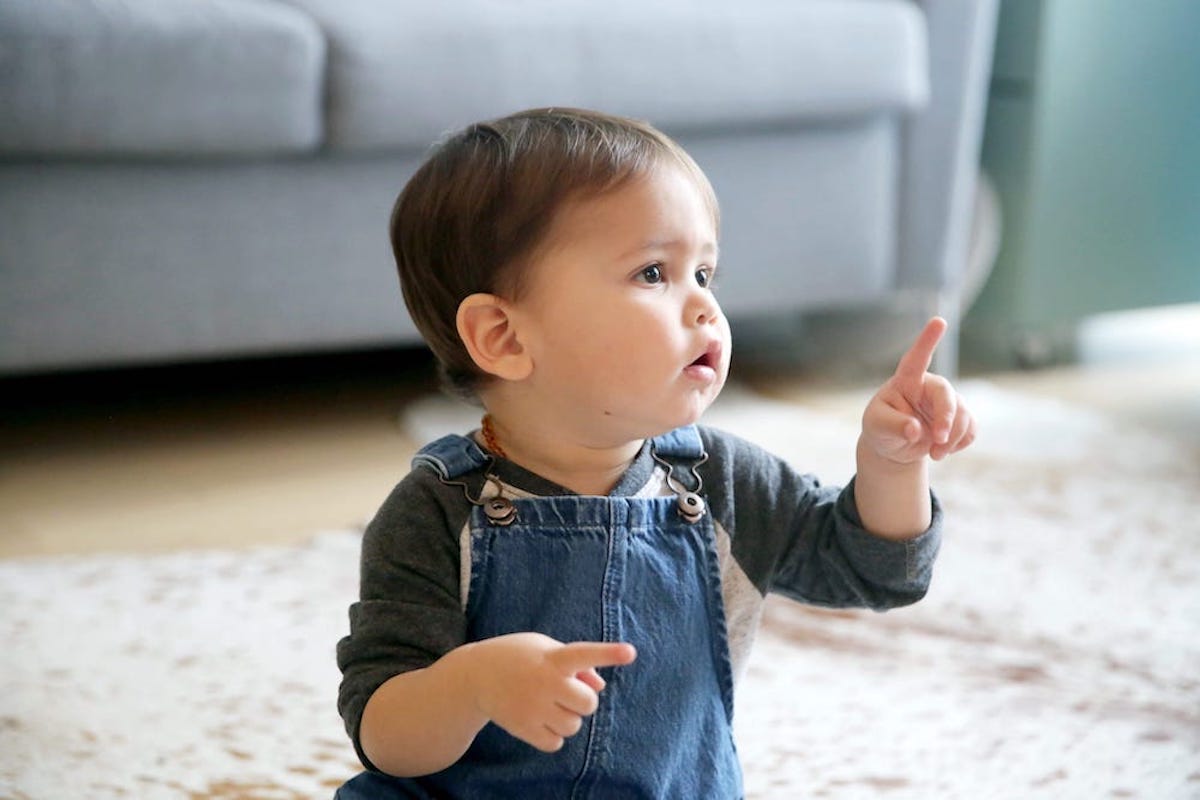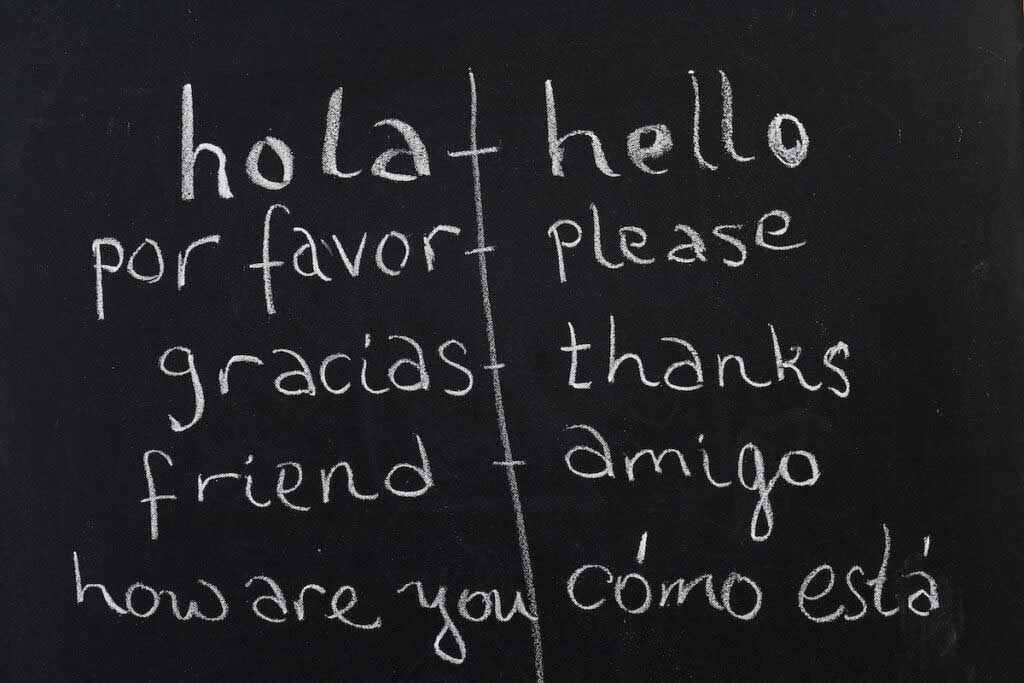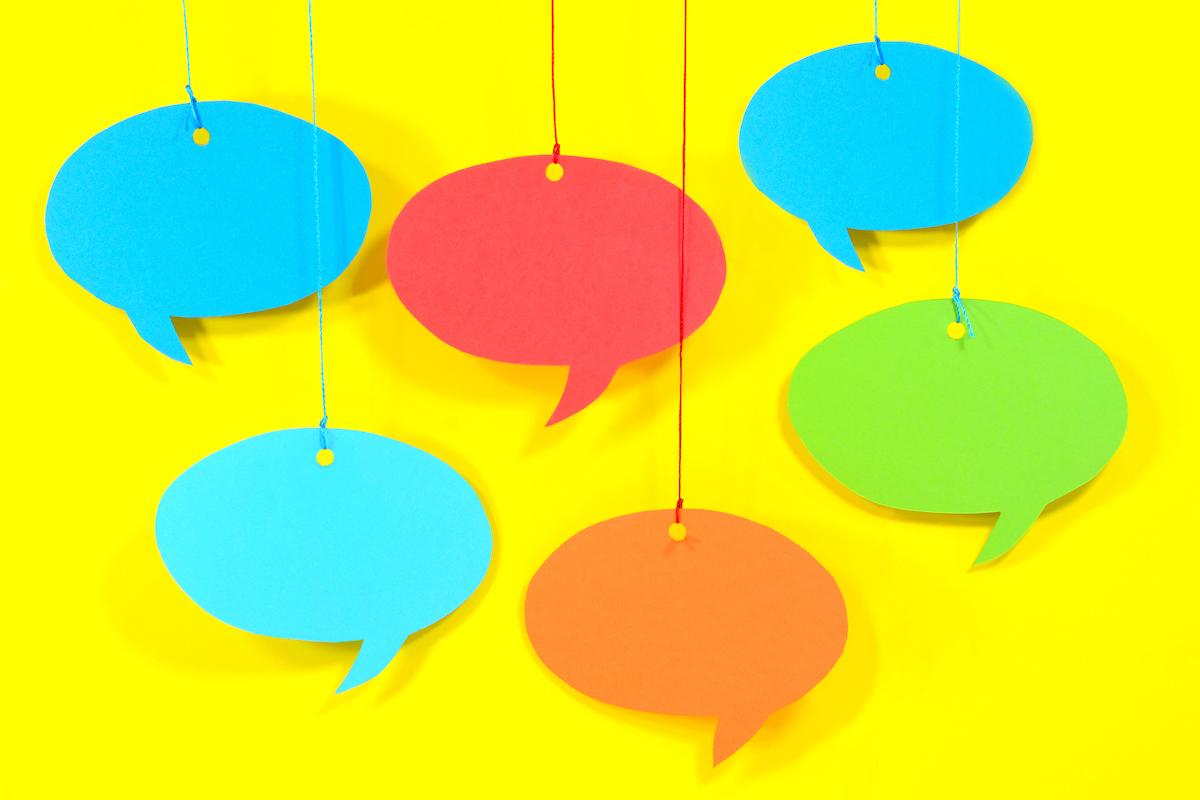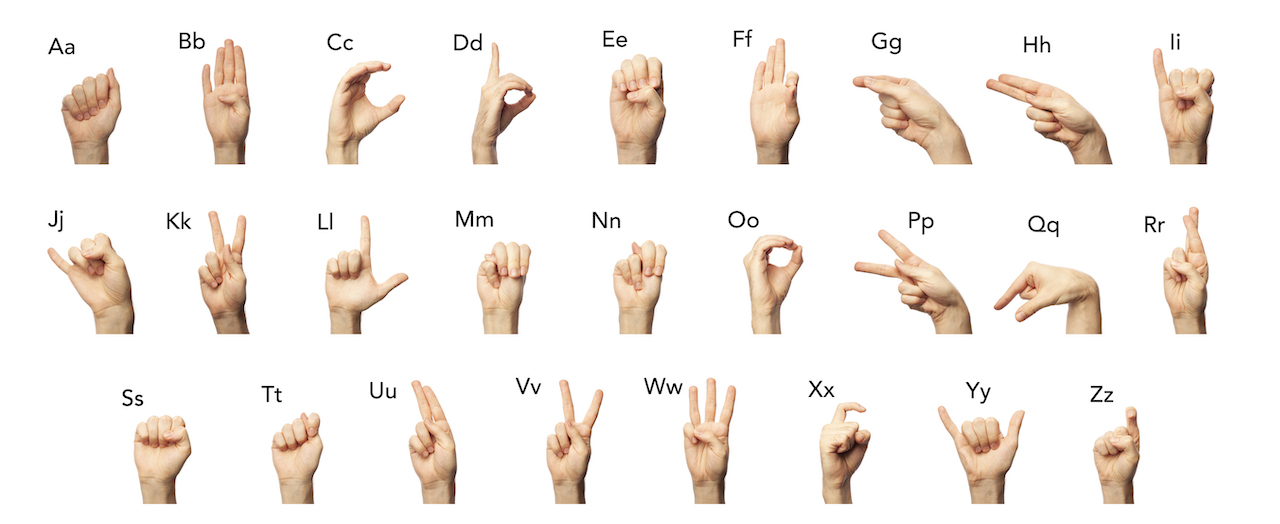One of my children’s favorite books when they were little was Knuffle Bunny. It follows a girl, Trixie, who loses her favorite stuffed animal, Knuffle Bunny, at the laundromat. She continually yells at her dad, “Aggle flaggle klabble!,” which he does not understand, and he’s left dragging her home as she screams. Only when her mom realizes Knuffle Bunny is not with them do they run back to the laundromat and find the toy, at which point Trixie yells, “Knuffle Bunny!”
Which perfectly captures the process of your child learning to speak. It’s frustrating and harrowing, and also incredibly neat when they get it.
Today’s conversation on the podcast is with Michael Frank, a professor at Stanford who works on this very question of how children learn to speak. We talk about how language works, the difference between receptive and expressive language, and which language is the hardest to learn to speak (spoiler alert: it’s Danish).
To spark your interest, here are three highlights from the conversation:
How do kids learn how to talk?
Back in the day, the starting hypothesis was: I say things to my kid, they repeat it back — they imitate. And that’s in some sense not a terrible way to start thinking about language development, because in different languages around the world, there’s a different word for dog. And so you’ve got to learn that word by hearing it and hearing it matched with something in the world, ideally a dog, or a stuffed dog or a picture of a dog in a book or so forth. But language is more than imitation. So you’re hearing these things, but you’re also hearing how they go together in sentences. And it’s actually very, very quick to see kids, starting at maybe even 18 months, two years, to combine words in ways that they haven’t heard before — starting to generalize and produce new forms.
And when that gets super-obvious to parents is when they start to make errors, especially when they say, like, “Oh, I goed to the store like this.” That’s them combining that “-ed” from other verbs that they know with a verb that it doesn’t go with — so, basically some combination of learning from the environment from the people around them to get those word forms and then starting to combine them into novel expressions, trying to make new sentences and get their message across in whatever way they can.
At what age do babies start to comprehend language?
Should you talk to your baby frequently?
And those correlations do exist. They’re modest in size, in part because any correlation between parent and child has a lot going on. There are [also] some studies where you can intervene on the parents to try to get them to talk more to the kids. Not very many, not very big, but there are some, and you do find gains in the child’s vocabulary.
Now, the next question is: can we then estimate how big an effect that is, how it lines up? There’s a lot of complicated research questions about the causal inference there that are not well worked out.
So, that’s all to say there is some effect. Does that mean that you then should go and intervene in your own house in this kind of uncontrolled way? I would say no. What you should do maybe is think from first principles like, okay, what’s a good, high-quality, fun, language-rich thing you can do with your kid. Reading a book is one, or having a conversation or in-depth play session. A lot of the ways that we think of relating in a high-quality way to our kids actually provide really good, what we call “grounded,” language, where we’re talking about the here and now in some way that they understand.
Full transcript
This transcript was automatically generated and may contain small errors.
When I was a baby, my mother was at a party and she met a woman named Katherine Nelson, who was an expert in child language development. And as my mom used to tell it, she explained to Katherine that I like to talk to myself in the crib, more or less nonstop. And Katherine asked her, “Well, would you be willing to record that?” And so my mom recorded, with a tape recorder under my bed, me for two years, almost every night when I talked to myself. And she returned all of these tape recorders over to Katherine, and a bunch of researchers used them to try to understand how kids develop language.
And I remember when I was nine getting the book that resulted from this research and looking through it and thinking, “Who would read this? It’s incredibly boring.” But as an adult, as a parent myself, I have gone back to read that book and I no longer find it boring. Not because I’m so interested in my own babbling, although who isn’t, but because the question of how our kids develop language as parents is so fascinating because it’s so hard to understand. At one moment your kid is just babbling, and then all of a sudden it feels like you wake up two weeks later and they’re talking. And those first moments of talking in a way you can understand are so powerful because now instead of screaming and throwing things, they can say “Milk”, and you can understand, “Ah, milk. I should have guessed.”
So child language development is exciting, is interesting, it can also be fraught. It is one of the first things that gives us a moment to say, “Well, is my kid behind? Do they have enough words? What is enough words? How do I understand whether that even is a word?”
My guest today, Michael Frank, researches language development. He’s a professor at Stanford and he studies how kids learn to speak and how we can understand how kids learn to speak. And we’re going to talk today about what’s cool about studying this, what we know about it, how we should think about the difference between understanding and speaking. And think about when you should be worried, and should you be worried, and how to think about the stresses that come with this. After the break, Professor Michael Frank.
I am interested in bringing larger datasets to bear on these questions and use a wide variety of methods including eye-tracking, tablet experiments, and computational models. Recent work in my lab has focused on data-oriented approaches to development.
So, for parent data, you’ve pretty much just put together our favorite keywords. There’s data, big data, children, methods, development. It’s the best. And so, I was struggling with where to start and we’re going to try to touch on a bunch of those pieces, but I think we’re going to start with language development. So, without asking you to teach me five semesters worth of PhD classes, can I just ask you to talk a little bit about this very basic question of how does my kid learn to talk, because it seems like magic.
And when that gets super obvious to parents is when they start to make errors, especially when they say like, “Oh, I goed to the store like this.” That’s them combining that -ed from other verbs that they know with a verb that it doesn’t go with. So, basically some combination of learning from the environment from the people around them to get those word forms and then starting to combine them into novel expressions, trying to make new sentences and get their message across in whatever way they can.
Most notably our best technique for this is functional MRI, which requires you to sit still for many minutes at a time, which is not a strength of toddlers learning language. So, we’re actually really, I think in the next couple years going to learn a lot as folks like some of my colleagues here at Stanford persuade toddlers to sit still for just a little bit longer and get a little bit faster at functional MRI scanning and maybe we start to apply some of those insights from the adults to the kids. But right now, the brain data on kids learning language is actually much more limited than you might expect.
And first words are kind of frustrating like that. They come and they go. They’re sometimes communicative. Sometimes they just feel like you’re trying things out. One way that my father-in-law, who’s actually a speech pathologist, describes this process is that kids are playing the instrument. They’re just trying stuff out with their voices. And you’ll actually see this with signing kids, too. They’ll babble with their hands. They’ll try out different gestures.
But I think that the reason here that this is a complicated question is because there’s no language, not language distinction. It’s all communication all the way down. That’s my viewpoint is even very, very early on, kids are really communicating to other people.
And you see that actually well before language in most kids because they start to point and that emergence of pointing is a huge milestone. It’s really, “I want to share this external thing with you.” And a lot of people have argued that that’s pretty unique to humans. That big declarative like, “Let’s share this thing that’s outside of the two of us, but let’s share it between the two of us.” That triadic idea. That’s human unique and really predictive of later language. It’s really a powerful moment.
So, I actually remember that moment with both of my kids that fingers out, we’re looking at something else and you want to tell me about it. And that’s really special. I was walking down the street in New York City with my son Jonah when he was about 10, 11 months old at Thanksgiving visiting my parents and he was like, “Da.” I was like, “Yeah, that’s the moment.”
But if you take a milestone for early language, like saying 50 words or 100 words or combining words, it varies by a lot of months. And that’s within typically developing healthy kids who are going to have good language outcomes. So, if there’s anything that I’ve discovered from digging into data with lots and lots of kids, that was I think not really appreciated or known, it’s just how much the variation between kids is actually consistent or universal across the samples we look at. No matter where you’re looking in the world, kids are all over the place with respect to language.
Evolutionarily speaking, there’s a lot of mechanics that human beings have that other primates don’t for using your vocal apparatus and your breathing and your vocal cords and your articulators so flexibly to be able to do this incredibly fast dance that we do when we talk. For example, my son, Jonah, actually was by many standards what’s called a late talker. His productive vocabulary was relatively low at age two. I wasn’t worried at all about him. Well, I wasn’t worried very much about him. How can you be a parent-
So, there is huge variation. That’s not to say that you shouldn’t sometimes worry. There are places where we do need to go to the pediatrician, ask for a referral, maybe go to a speech language specialist, try to figure out what’s going on. And that’s typically when a child is in that third year, they’re two, two and a half and they’re still not saying much and especially when they’re having trouble understanding or even earlier if they’re really not communicating, so they’re not doing those communicative gestures like pointing, they’re not responding to their own name consistently.
These are the kinds of indicators that we look at where it’s good to chat with a professional to try to figure out what the next steps are.
I think what you want to look for for that reassurance is that comprehension, is the understanding and the desire to communicate. Those are going to be your big, kind of easy to spot markers. If there’s comprehension and desire to communicate, it’s probably a speech motor thing. If there’s not, you might be looking at either a general language issue or something like an autism spectrum disorder.
So, doing good assessment in that kind of case is something that we’re working on and a bunch of other groups around the world are working on because it’s so critical to find out is this child experiencing a real language delay where there might be an intervention that we could do? Or is this just a natural consequence of, “Hey, there’s a lot of language input from different sources coming in. There are different languages. I need to differentiate them. I need to learn enough vocabulary to work with each independently.”
And so, those correlations do exist. They’re modest in size in part because any correlation between parent and child has a lot going on. There’s measurement error, so forth. Then there’s also the question of how much those are forced by-
So, that’s all to say there is some effect. Does that mean that you then should go and intervene in your own house in this kind of uncontrolled way? I would say no. What you should do maybe is think from first principles like okay, what’s a good high quality, fun language rich thing you can do with your kid. Reading a book is one, having a conversation or in-depth play session. So, a lot of the ways that we think of relating in a high quality way to our kids actually provide really good, what we call grounded language, where we’re talking about the here and now in some way that they understand.
And maybe those are typically the moments that are most predictive also in these studies. So, it’s not about constantly talking and jamming the Wall Street Journal in their ear. It’s about creating moments that are high quality and fun and interactive and motivating. And that’s often what we encourage parents to do, even when we’re not really thinking about language per se.
If your kid is more on screens during the pandemic lockdown because you got to work and then you report they have less language, you both know they were on screens and you were also not hanging out with them, seeing what they knew about language. So, it’s very, very tough to figure this out and we don’t have a lot of direct assessment. It was the pandemic. We weren’t going into people’s homes and showing the ball in the box. So, it’s really tricky.
I would say from first principles, I am not worried about masking as a key source of issues in language comprehension and language learning. I think there are momentary issues. It’s hard to understand somebody when a mask is on and that’s going to be true, multimodal language input, meaning when you can see the face and the lips moving, that’s obvious. That really does help in lots of experiments. So, understanding what you’re seeing in the moment with the mask on is harder than with the mask off.
But nobody, or almost nobody was growing up for a long time with everyone around them with a mask on. They were just growing up with sometimes some people with masks on. My kid was probably the most masked of anybody in the Bay Area, was super intense about this and they had masks on outdoors for a very long time. You could shake your head at that. They’ll still have masks on if there’s a whiff of COVID in the next county. Sorry. But they’re still very, very intense about these things.
And even so, what was he getting? Okay, six, seven hours a day of masked input and then he comes home and we’re talking to him on the weekend. So, in terms of hours a day, it’s not so much.
All right, so I want to talk now about the big data, about the value of big data in this space. And I actually want to tell you that I am personally small data. So, when I was a baby, my mom put a tape recorder under my crib on the behest of a language development specialist named Katherine Nelson, and she recorded me for many years talking to myself and a bunch of people wrote this entire book about my individual personal language development as a child. Obviously, your approach is very different because you have more than one child in many of your studies.
And so, I’m curious how you think about the value and first, it might be useful to hear a little bit about what one means here by big data, but also then how do you think about the value of that versus the kind of intensive study of say one individual kid.
So, I think you could either go deeper on one kid or broader with many, many kids. Both of those are actually very useful and appealing from my perspective. So, when I got started, one of the things that I was doing was collaborating with Deb Roy at the MIT Media Lab, who studied his kid by recording about 70% of his child’s waking hours and then his collaborator named Brandon Roy. Unfortunately, because they weren’t related at all. It wasn’t his son that was the collaborator. It was just another guy that happened to have the name Roy.
But anyway, Brandon led like 60 transcribers to transcribe millions of words of this one child’s daily life. Everything he said, everything he heard, and that’s an incredibly fascinating data source that we’ve worked on a lot. So, you learn a lot from that kind of big data, not big and as the number of participants.
And then we compile those in a big data database that represents not all of the world’s languages of course, nor even all of the world’s regions, but maybe a broader and more diverse set than what typically gets studied in lab studies.
And so, that gives us a window into that big and variability how different kids are from one another and also gives us a really important window into the acquisition of different languages in different cultural contexts because there’s so much about language and culture that we’ve talked about here implicitly, how we think we’re supposed to talk to kids, what we think the goal is that we want to get our kids to succeed at school and we want to talk to them a lot. That’s all very culturally conditioned. So, that approach has really been to look at variability and to try to understand the sources of variability in kids’ language and how those relate both within individual kids and across cultures.
My read of this in lay terms is that in these large language AI models like ChatGPT is built on top of, they’re able to do these incredibly impressive things. Like you ask them to write a poem in the style of William Shakespeare about farts and they do a great job. My kids like to ask that question. But in order to get to that, they have to be fed in an unbelievable amount of data, say like 10,000 times more than a kid will hear, to get to the same ability to write not a very good poem about farts, but some folk poem, original generated poem about farts. So, why is that?
For AI, that’s kind of what I meant by intriguing emergent capacities is that you could give instructions and provide examples and they could learn from that. And that’s the thing that popped out after gazillions of examples. They have to read a third of the entire internet in order to be able to figure that out.
So, one big difference is the kind of data that the AI is getting. It’s getting decontextualized language. It’s basically imagine just printing out all of Wikipedia in a single stream with no formatting and shoving that into a learning machine. It’s very hard to figure out what’s going on there. In contrast, what kids get is this very social language that’s built up in conversation in context they understand. It’s accompanied often by other cues. You might be looking at the Uno cards. It’s within a set of conventions and practices that they understand, “Now we’re going to play.”
So, there’s all these other structures that allow the child to make much more of the data they get. And I think it’s an open question exactly which of those matters. Is it the social stuff? Is it the fact that there’s grounded visual input or other kinds of input? Is it the context? That’s the kind of thing that we’re as a scientific community working on figuring out.
People are trying to train models on videos instead of written text. They’re trying to train models in more social ways and so forth. But that’s the general puzzle is like, okay, what would you do if you had much more enriched data like a kid? How much does that make a difference and why.
Community Guidelines













Log in